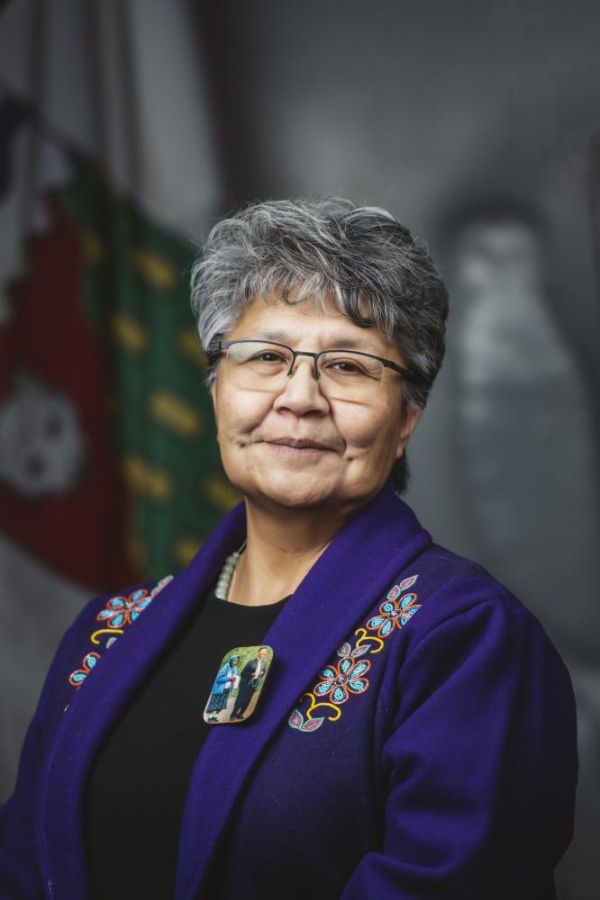Debates of October 5, 2023 (day 167)
Question 1624-19(2): Public Engagement on Arsenic Remediation Guidelines

Merci, Monsieur le President. My questions are for the Minister of Environment and Climate Change on the socalled public engagement on the environmental guideline for contaminated site remediation. It also includes the arsenic remediation guidelines. These revisions have taken 20 years, Mr. Speaker. On the heavier same web page, the review period is now about seven weeks, not including the evacuation period. So can the Minister explain why this public engagement is so short and at the very end of the life of this Assembly? Mahsi, Mr. Speaker.
Thank you, Member for Frame Lake. Minister responsible for Environment and Climate Change.

Thank you, Mr. Speaker. Mr. Speaker, the public engagement period for this guideline was opened on August 4th, 2023, and has been extended until October 15th, 2023, due to the evacuation. The standard GNWT engagement period is between four to six weeks. Given the evacuation, the department has extended this engagement timeline just well beyond the sixweek period. Thank you, Mr. Speaker.

Merci, Monsieur le President. Well, let's talk about that public engagement period. The extension might allow for more meaningful public input on the guideline but communications from the department, in my view, need to be improved.
Can the Minister tell us whether he is prepared to improve public communications, including a further extension, some plain language materials on this important policy document, and maybe even a public meeting or a webinar? Mahsi, Mr. Speaker.

Thank you, Mr. Speaker. Mr. Speaker, we do not believe a plain language summary is required. Mr. Speaker, the guidelines provide a short overview of the methodology and approach taken, which is accessible on Have Your Say web page. The Have Your Say web page provides an email address that is monitored daily. Any specific questions the public might have are reviewed by staff and responded to as required and in a timely manner. Thank you, Mr. Speaker.

Yeah, merci, Monsieur le President. I spent about an hour and a half looking at the material last night. Way over my head, so it's definitely not plain language. But the new guideline would reduce the acceptable limits for arsenic in soil related to all uses compared to the 2003 guidelines. However, the new guidelines would allow Yellowknife residents to be exposed to, in some cases, three times as much arsenic as those people living outside of Yellowknife.
So can the Minister try to explain why it is okay to expose Yellowknifers to, in some cases, three times as much arsenic compared to those that live outside of Yellowknife? Mahsi, Mr. Speaker.

Thank you, Mr. Speaker. Revisions to arsenic criteria were undertaken through a structured and scientific risk assessment process to determine approximate background criteria based on the evaluation of new data and methodology since 2003. This process includes assessment of human health risk, and it was concluded that these levels of arsenic are safe for Yellowknife residents. Human health risk assessments look at all exposure pathways. Examples include how people use the land and where they can get their food, whether it is from the land or grocery store. And these are all factors that determine the level of the risk. Thank you, Mr. Speaker.
Thank you, Minister. Final supplementary. Member for Frame Lake.

Merci, Monsieur le President. That's great. So public contractors get, you know, six weeks to look at stuff that may have been taking 20 years to develop. You know, very technical stuff. Not good. This is not good public engagement, Mr. Speaker.
But it's not clear what these new arsenic soil remediation guidelines would mean for the Giant Mine remediation project. Although that work was finally approved under an environmental assessment completed in 2014, the soil remediation was based on the old potentially unsafe 2003 arsenic soil remediation guidelines. So can the Minister tell us whether the new, much lower, arsenic soil remediation guidelines will be applied to the Giant Mine Remediation Project? Mahsi, Mr. Speaker.

Thank you, Mr. Speaker. The Giant Mine Remediation Project has been aware of the potential change to the GNWT environmental guidelines for contaminated soil or remediation. Current remediation activities, as defined by the closure and completion plan and the water license, are based on the 2003 guidelines, which were adopted by the land and water board at the time. It is important to note that both the 2003 and the revised 2023 guideline allow proponents to carry out a site-specific assessment to determine suitable criteria using soil remediation based on consideration for site factors and conditions. The Giant Mine Remediation Project undertook a sitespecific assessment and was considered with the 2018 human health and ecological risk assessment. As such, the Giant Mine Remediation Project will continue to apply the 2003 guidelines. Thank you, Mr. Speaker.
Thank you, Minister. Oral questions. Member for Monfwi.







